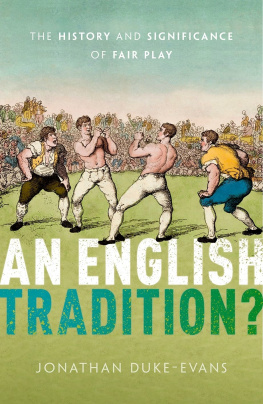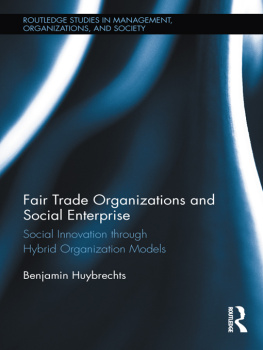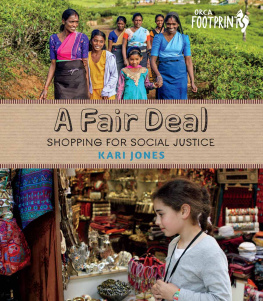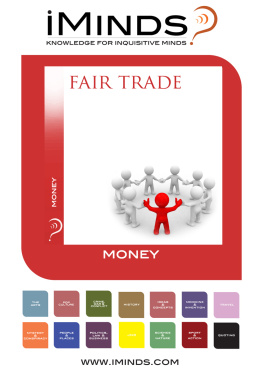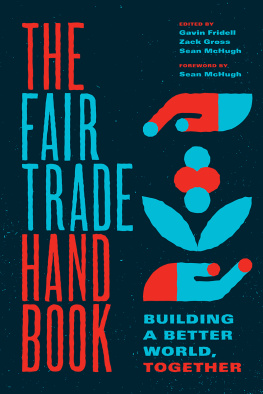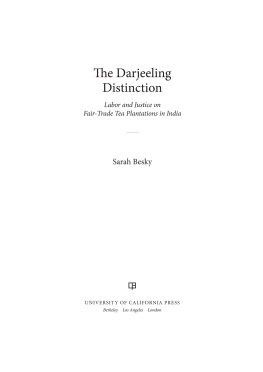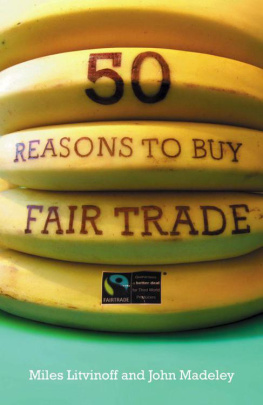


Text copyright 2020 Joe Osman
This edition copyright 2020 Lion Hudson IP Limited
The right of Joe Osman to be identified as the author of this work has been asserted by him in accordance with the Copyright, Designs and Patents Act 1988.
All rights reserved. No part of this publication may be reproduced or transmitted in any form or by any means, electronic or mechanical, including photocopy, recording, or any information storage and retrieval system, without permission in writing from the publisher.
Published by
Lion Hudson Limited
Wilkinson House, Jordan Hill Business Park
Banbury Road, Oxford OX2 8DR, England
www.lionhudson.com
ISBN 978 0 7459 8104 8
eISBN 978 0 7459 8103 1
First edition 2020
Acknowledgments
Cover collage: painted dishes traveler/istockphoto.com; tea plantation worker tunart/istockphoto.com; coffee beans Tendo23/istockphoto.com; Indian bags RuslanKaln/istockphoto.com; Mexican fabric korionov/istockphoto.com; cocoa pods pierivb/istockphoto.com
All scripture quotations are taken from the Holy Bible, New International Version Anglicised. Copyright 1979, 1984, 2011 Biblica, formerly International Bible Society. Used by permission of Hodder & Stoughton Ltd, an Hachette UK company. All rights reserved. NIV is a registered trademark of Biblica. UK trademark number 1448790.
The prayer on is taken from Common Worship: Services and Prayers for the Church of England, copyright The Archbishops Council [2000].
A catalogue record for this book is available from the British Library
CONTENTS
FOREWORD BY DR JOHN SENTAMU
Do not go where the path may lead, go instead where there is no path and leave a trail.
Nobody is quite sure who said this it is often attributed to philosopher, Ralph Emerson but, whoever said it, it means that you shouldnt follow the path which is already created by others, instead you should stand out and do something new and create your own path for others to follow. You should do something unique and leave your mark in the world.
Traidcraft (the company) and Traidcraft Exchange (the charity) took that bold step and blazed a new trail some forty years ago. And Joe Osman is the best placed person to reflect on the life and journey of Traidcraft because he was there right from its inception and holds the institutional memory of the organization.
As you will see from the book, Joe Osman has journeyed with Traidcraft through its ups and downs. From modest beginnings, he worked closely with the producers as well as understanding the complexities of the route to market for the goods. He was always innovative and always thinking of new products. What motivated Joe was the issue of fairness and justice for the small and marginalized producers who stood no chance on the world stage of trade. Joe has been very candid in his appraisal of Traidcraft plc (the company) and he has not shied away from spelling out the challenges facing the organization then and now.
Although much of Joes work was outward facing, working mainly with producers and the wider Fair Trade movement, he was keenly aware that Traidcraft would not have achieved what it has been able to do without the producers, supporters, Fair Trade voluntary representatives (mainly from churches), as well as staff, both past and present, who have been part of the Traidcraft journey.
So, not quite a from rags to riches story, but definitely from selling jute hanging baskets and sikas from one bedroom in Tyneside, to selling Eat your Hat dark chocolate. Traidcraft has come a long way. This is a journey of faith, bringing together Christian values and the principles of justice and fairness into the commercial trade.
Of course, as the guest writers have said, it remains to be seen if Traidcraft has become a victim of its own success (in that the Fair Trade practices they pioneered have now become mainstream), or whether Traidcraft adopted a wrong business model which did not deliver in the end, or whether a radical solution lies elsewhere.
Together with his former colleagues as guest writers, Joe Osman has been able to chart the Traidcraft journey through the good times and challenging times and to highlight the work yet to be done. Is Traidcrafts work done or not? I am not convinced that the mission is complete. There is much more to be done to raise awareness and to campaign for trade justice to be rolled out globally.
In this global village where we all depend on each other, may I encourage people of faith and none to stick with this journey a journey which began with a small group of individuals, driven by their Christian values and ethics, responding to the scandal of poverty through an alternative model of trade, which puts people first before profit.
Dr John Sentamu
Former Archbishop of York
INTRODUCTION
In 2019, Traidcraft entered its fortieth year a landmark for an organization that has influenced the lives of countless people, whether producers in the developing world or shoppers around the UK and beyond. As my own journey in Traidcraft came to an end early in 2019, it seemed fitting that a record of that journey was made. Indeed, several people encouraged it, given that my time at Traidcraft covers its entire history in some way that includes a period at Tearcraft from which Traidcraft emerged in 1979. I eventually concluded that I was probably the best, if not only, person to write something, given that Ive lived and breathed the organization for much of my life.
Its not that my own personal journey constitutes a definitive history of Traidcraft but I have tried to include most of the key events or milestones. History anyway is, in a sense, interpretive. I was, for the most part, in a relatively senior or influential role never the captain, but for a lot of the time on the bridge, and the account is very much through my eyes. Ive managed to get access to Traidcraft documentation from the past forty years and my thanks go to those that have supplied much of this material. Inevitably there will be lots missed out. In my career at Traidcraft, I was mostly involved with the trading company, meaning Traidcraft plc, so much of the content of this book will focus on that and it will inevitably be difficult to do justice to the important and broader work of the Traidcraft Exchange.
In the course of writing, I have consulted with many ex-members of staff and beyond. The list includes everyone who led Traidcraft throughout its history and the narrative contains many contributions from these and others. My appreciation and thanks go to all those who have contributed in any way.
Two substantive works have been published about Traidcraft in the past. The first, by Traidcrafts founder Richard Adams, called Who Profits? was an account of the birth and development of Traidcraft until his departure in 1988. I have drawn from both of these publications in this narrative. Other titles about Fair Trade have been published in the intervening years and each one gives a high profile to Traidcraft. This is the first publication which gives focus to Traidcraft and is written, as it were, from within.


